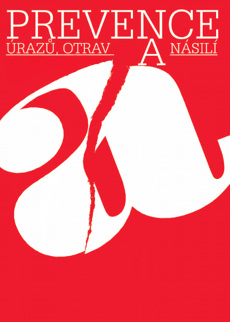Porodní poranění novorozence
Newborn birth injuries
Pavel Huml1, Alice Mocková1, Jiří Dort1, Miloš Velemínský ml.2
1Fakultní nemocnice Plzeň, neonatologické oddělení
2Jihočeská univerzita v Českých Budějovicích, Zdravotně sociální fakulta, katedra klinických a preklinických
oborů
Korespondenční autor: Doc. MUDr. Jiří Dort, Ph.D. (dort@fnplzen.cz)
ISSN 1804-7858 (On-line)
Full verze:
Submitted:25. 1. 2013
Accepted: 2. 12. 2013
Published online: 30. 6. 2014
Summary
Newborn birth injuries can affect both short-term and especially the long-term quality of child’s life. Forms of birth traumatism are presented with the fact that some traumas have permanent consequences. The authors provide an overview of the most common contemporary forms of birth traumatism using the results of their work from a period that started on October 1, 2009 and ended October 1, 2010. The overview is a result from their own experience which is compared to some important literary figures on traumatisms, which didn’t appear in their data bases. They state that there is a general decrease of the birth rate traumatism, and at the same time in its severity. This fact is caused by the high level of perinatal care units in the Czech Republic.
Keywords: birth traumatism – newborn – frequency
Souhrn
Porodní poranění novorozence může ovlivnit jak krátkodobě, tak hlavně dlouhodobě kvalitu života dítěte. Jsou prezentovány formy porodního traumatismu s tím, že některé zanechávají trvalé následky. Autoři podávají přehled nejčastějších současných forem porodního traumatismu, přičemž využívají výsledků svého pracoviště z období od 1. 10. 2009 do 1. 10. 2010. Vycházejí tedy z vlastních zkušeností, které pak srovnávají s některými významnými literárními údaji o traumatismech, které se v jejich souboru nevyskytly. Konstatují, že lze sledovat všeobecný pokles frekvence porodního traumatismu a zároveň jeho závažnost. Tato skutečnost je ovlivněna vysokou úrovní perinatální péče v České republice.
Klíčová slova: porodní traumatismus – novorozenec – frekvence
Literatura
1. Ahn HS, Chang Y-W, Lee DW, Kwon KH, Yang SB (2010). An incidentally detected hepatic subcapsular hematoma in a very low birth weight newborn: a case report. 3/1: 32.
2. Akin MA, Coban D, Doganay S, Durak Z, Kurtoglu S (2011). Intrahepatic and adrenal hemorrhage as a rare cause of neonatal anemia. J Perinat Med. 39/3: 353–354.
3. Bauer F, Bystrická A, Kralovič Ľ (2007). Krvácanie závislé od vitamínu K. In: Šašinka M, Šagát T, Kovács L a kol. Pediatria 1. diel. 2. vyd. Bratislava: Herba, s 225. IS BN 978–80–89171–49–1.
4. Bentolila V, Nizard R, Bizot P, Sedel L (1999). Complete traumatic brachial plexus palsy. Treatment and outcome after repair. J Bone Joint Surg Am. 81/1: 20–28.
5. Berveiller P, Vandenbroucke L, Popowski T, Afriat R, Sauvanet E, Giovangrandi Y. Cases J (2012). Hepatic subcapsular hematoma: a case report and management update. J Gynecol Obstet Biol Reprod (Paris). 41/4: 378–382 [article in French].
6. Čech E a kol. (2006). Porodnictví. 2. přepracované vydání. Praha: Grada, s. 175–176.
7. Dias E (2012). Bilateral humerus fracture following birth trauma. J Clin Neonatol. 1/1: 44–45.
8. Dort J, Dortová E, Jehlička P (2013). Neonatologie. 2. přepracované a doplněné vydání. Praha: Karolinum.
9. Fenichel GM (2006). Trauma and vascular disorders. In: Fenichel GM (ed.). Neonatal Neurology. 4th ed. Philadelphia, Pa: Elsevier Churchill Livingstone, chap 5.
10. Fette A, Mayr J (2012). Slipped distal humerus epiphysis in tiny infants easily detected and followed-up by ultrasound. Ultraschall Med. 33/7: E361–363.
11. Frič I, Chovancová D (2007). Pôrodný traumatizmus. In: Šašinka M, Šagát T, Kovács L a kol. Pediatria 1. diel. 2. vyd. Bratislava: Herba, s. 184. IS BN 978–80–89171–49–1.
12. Chang HY, Peng CC, Kao HA, Hsu CH, Hung HY, Chang JH (2007). Neonatal subgaleal hemorrhage: clinical presentation, treatment, and predictors of poor prognosis. Pediatr Int. 49/6: 903–907.
13. Liška K (2002). Porodní poranění. In: Hrodek O, Vavřinec J et al. Pediatrie. 1. vyd. Praha: Galén, s. 72–74. ISBN 80–7262–178–5.
14. Mavrogenis AF, Mitsiokapa EA, Kanellopoulos AD, Ruggieri P, Papagelopoulos PJ (2011). Birth fracture of the clavicle. Adv Neonatal Care. 11/5: 328–331.
15. Murguía-González A, Hernández-Herrera RJ, Nava-Bermea M (2013). Risk factors of birth obstetric trauma. Ginecol Obstet Mex. 81/6: 297–303 [article in Spanish].
16. Nocciòli G (1968). An intracranial hemorrhagic case in a new-born undergone a vacuum extractor application. Riv Neurobiol. 14/1: 100–104 [article in Italian].
17. Ondriová I, Sinaiová A (2012). Porodní traumatismus u novorozenců. Sestra. 22/1: 44–46.
18. Osaghae DO, Sule G, Benka-Coker J (2011). Cephalhematoma causing severe anemia in the newborn: report of 2 cases. Ann Med Health Sci Res. 1/2: 223–226.
19. Ozdener T, Engin-Ustun Y, Aktulay A, Turkcapar F, Oguz S, Yapar Eyi EG, Mollamahmutoglu L (2013). Clavicular fracture: its incidence and predisposing factors in term uncomplicated pregnancy. Eur Rev Med Pharmacol Sci. 17/9: 1269–1272.
20. Papanagiotou P, Rohrer T, Roth C, Politi M, Zimmer A, Reith W (2009). Cranial birth trauma. Radiologie. 49: 913–917.
21. Pham CB, Kratz JR, Jelin AC, Gelfand AA (2011). Child neurology: brachial plexus birth injury: what every neurologist needs to know. Neurology. 77: 695–697.
